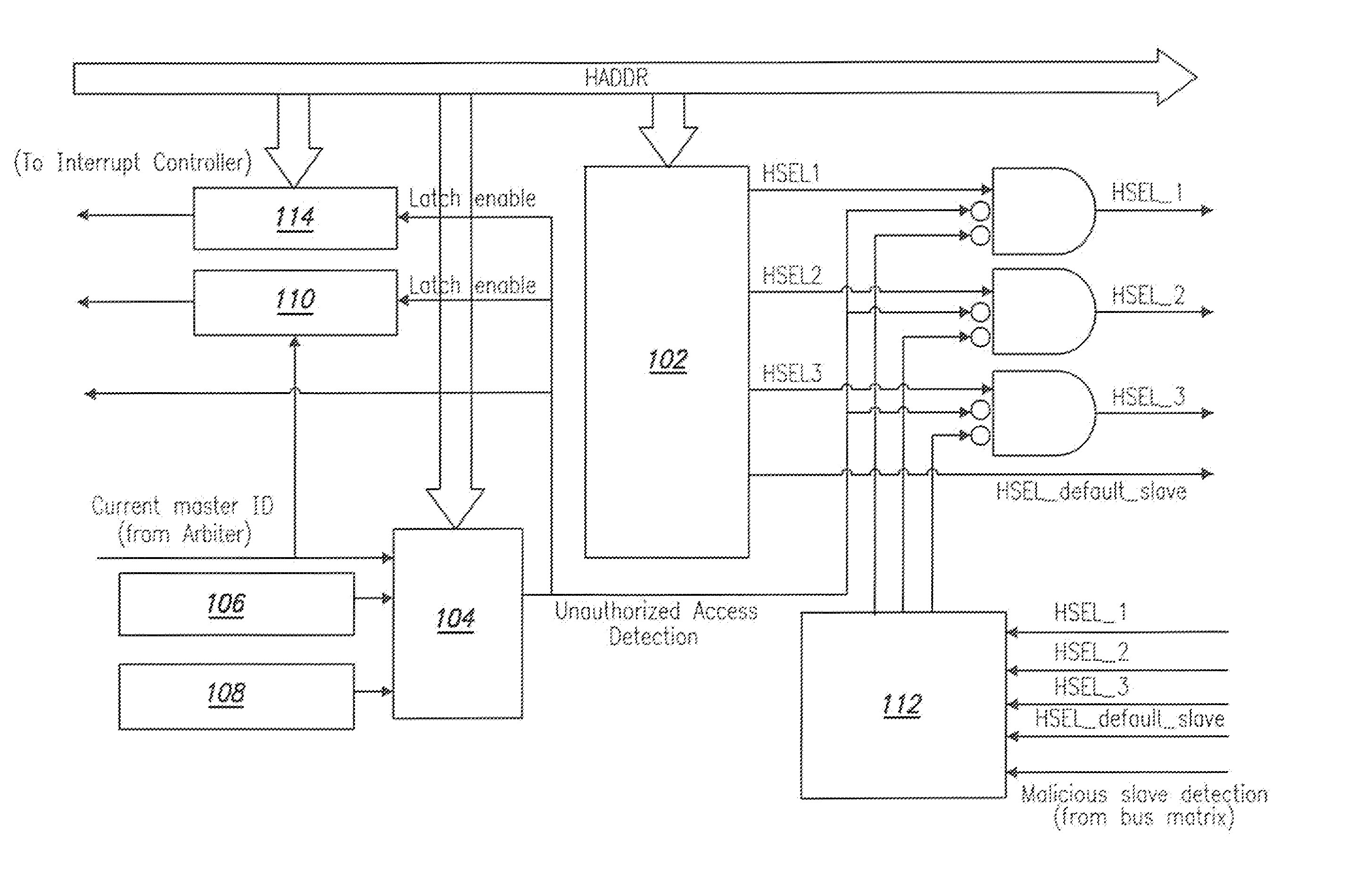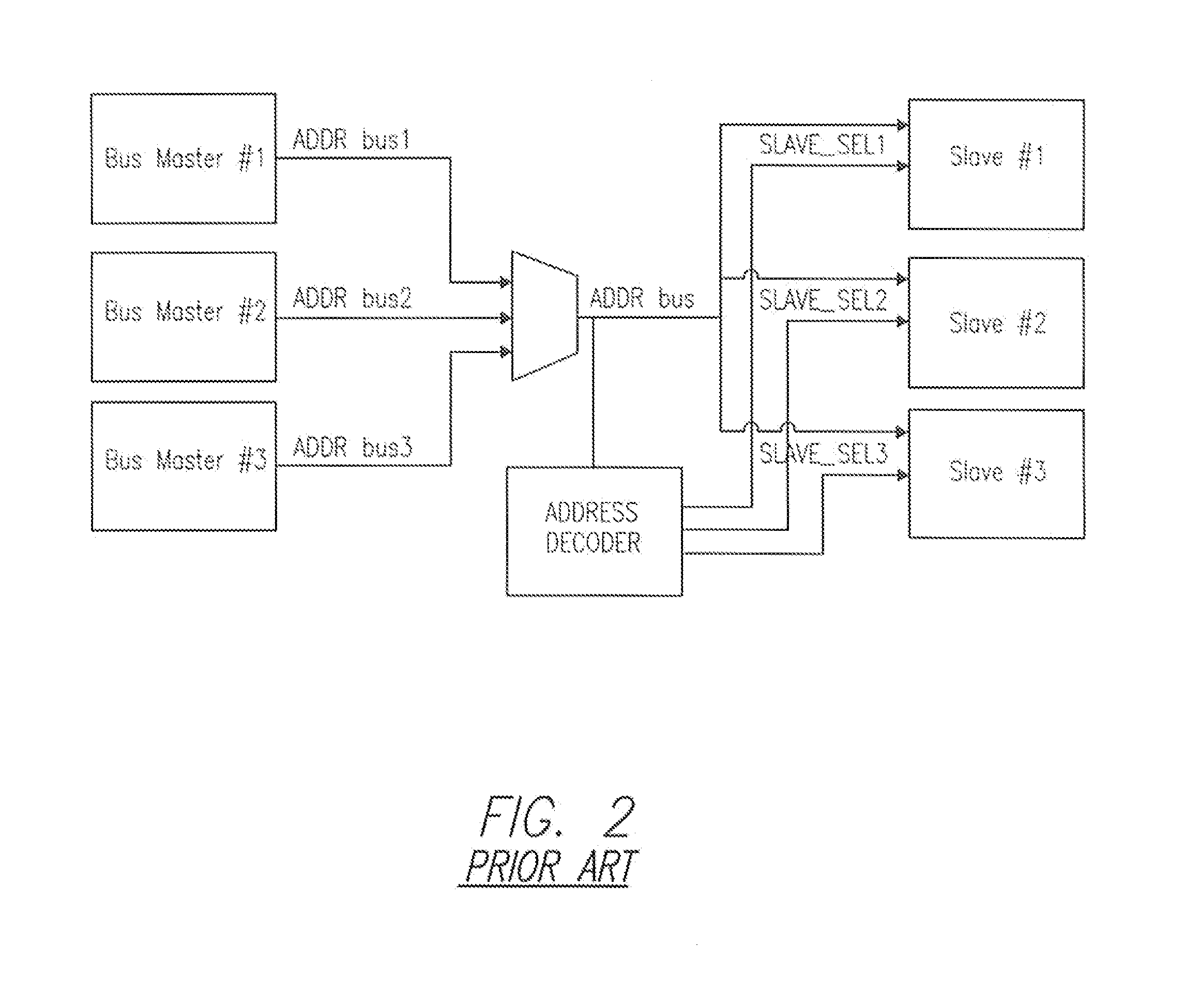Trojan-Resistant Bus Architecture and Methods
a bus and anti-trojan technology, applied in the direction of unauthorized memory use protection, instruments, error detection/correction, etc., can solve the problems of restricted address access detectors generating unauthorized access detection signals, master devices to maintain lockouts on the bus arbitrarily long periods of time, and locking and inability to function normally
- Summary
- Abstract
- Description
- Claims
- Application Information
AI Technical Summary
Benefits of technology
Problems solved by technology
Method used
Image
Examples
Embodiment Construction
[0030]The detailed description set forth below in connection with the appended drawings is intended as a description of presently-preferred embodiments of the invention and is not intended to represent the only forms in which the present invention may be constructed or utilized. The description sets forth the functions and the sequence of steps for constructing and operating the invention in connection with the illustrated embodiments. However, it is to be understood that the same or equivalent functions and sequences may be accomplished by different embodiments that are also intended to be encompassed within the spirit and scope of the invention.
[0031]Normal SoC Bus Structure and Operation
[0032]While an SoC bus is not a real physical bus, it performs the functions associated with a physical bus of interconnecting a processing core to the surrounding interface logic. Examples of SoC buses include AMBA (Advanced Micro-controller Bus Architecture) from ARM. CoreConnect from IBM, Avalo...
PUM
 Login to View More
Login to View More Abstract
Description
Claims
Application Information
 Login to View More
Login to View More - R&D
- Intellectual Property
- Life Sciences
- Materials
- Tech Scout
- Unparalleled Data Quality
- Higher Quality Content
- 60% Fewer Hallucinations
Browse by: Latest US Patents, China's latest patents, Technical Efficacy Thesaurus, Application Domain, Technology Topic, Popular Technical Reports.
© 2025 PatSnap. All rights reserved.Legal|Privacy policy|Modern Slavery Act Transparency Statement|Sitemap|About US| Contact US: help@patsnap.com



